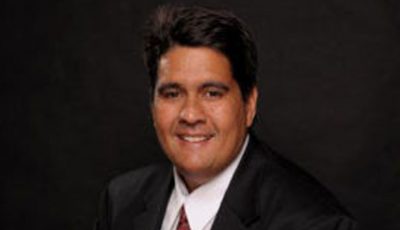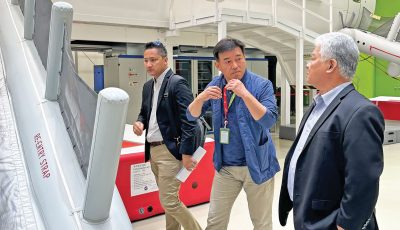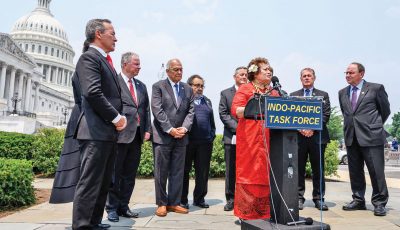Made in Saipan
They were poetry in motion. Four extended bellies displayed in trimester glory sauntered over one of Oleai’s grocery stores, bubbly and animated, giggly in their innocent girlishness. None could have been over 22 years old and they did not look like sophisticated girls of Shanghai.
They looked like they were wearing frumpy house dusters, forced to stepped out of the kitchen to pick up a handful of spices, and from the sound of their chats they are from Guangdong, one of the southern provinces that encompasses the Pearl River basin and delta, which strings Guangzhou, Shenzhen, Kowloon to Xiang Gang, aka Hong Kong to the Brits.
Why they congregate on Saipan is not a secret at all. They came to deliver their babies in one of the farthest outposts of American sovereignty, where with Guam and the Northern Mariana Islands, America’s day begins. It also gives the baby the privilege to get a blue passport and an SS number by virtue of being born on American soil.
There is nothing illegal about the practice but non-compliance with immigration rules is widespread. Well-heeled Filipino ladies who visited kin on island when the CNMI government still ran immigration had at their disposal American maternity wards, less crowded and more hygienic than those in Metro Manila, and, of course, relatively cheaper. I was naïve enough to think that the practice was for the wellbeing of the mother. Duh!
I was still dismissive of the prevalence of the practice even after reading Hong Kong’s accounts in the Chinese press of closing off its “maternity tourism.” It appears that a court judgment in 2001 literally opened the floodgates for China’s mainland mothers to deliver in the former British colony; newborn was eligible to get HK identity papers that allowed Xiang Gang residency even if the parents did not reside in the city. Baby births in 2001 from mainland mothers rose from 8 to 80 percent in a decade until the administration stemmed the tide.
The practice turned to the CNMI!
A Beijing acquaintance who retired in Shenyang relates how a trip to Saipan to deliver a baby was popular among friends in the capital city, four of them having made the trip within the last two years. “Birth tourism,” pejoratively used, referred by the press on the practice with no less than Gov. Eloy Inos reportedly threatening to raise the birth certificate fee from the normal $20 to $50,000, meant to crack a smile but nevertheless got the point across. The guv’s threat notwithstanding, the practice impacts Chinese tourism with consequences on island medical services.
Birth deliveries outside of China allow dual identities in a country that does not recognize dual citizenship. It is also a response to the one-child policy of the previous era when having a second child was frowned upon and not supported by the social services normally available to a one-child family. Chinese families are resilient enough to assign a foreign-born child to a childless relation to be the legal parent.
The four girls at the grocery store did not look like they were only here to deliver a baby. The preponderance of Chinese presence on island has become the butt of discrimination due to some manifest behavior not uncommon in the mainland. Drivers who do not stop for a crossing pedestrian are automatically identified as “Chinese,” and sticky money-hungry intensity of cutthroat business enterprises is definitely from the single-minded profit-obsessed Chinese. “Good manners and right conduct” of the European niceties is not wildly practiced in China.
However, locals patronize Chinese taxis, or if one was just going either way of the binghai lu (Beach Road), walks the distance but would not patronize the metered ones that hotels use for clients. The prices are too disparate! But the reputation of unregistered taxis is also rampant.
Like any other racial prejudice, it is unfair to generalize on any ethnic group. The diversity of races on Saipan is its asset. But everyone thinks that the taxi driver is Bangladeshi, the security guard from Sri Lanka and Nepal, the tour guide Korean and/or Japanese, and the haole is head huncho of the established corporation.
At my doctor’s waiting room were many pregnant Chinese ladies. While waiting for my SS appointment in Puerto Rico, I counted within 30 minutes three requests for SS numbers from three Chinese parents who did not have an SS number themselves but were coached well enough to expect their child’s card 4-6 weeks in the mail. I asked the officer how many applicants they get in a month and he knowingly smiled with “a lot.”
Made in Saipan was once for garments. Natal products, the blue book-documented and SS-numbered variety, are the spanking new ones off the line!



























